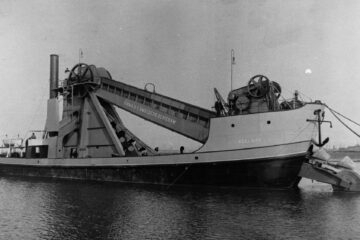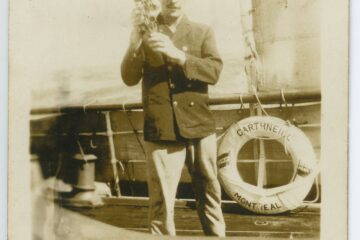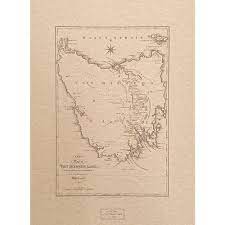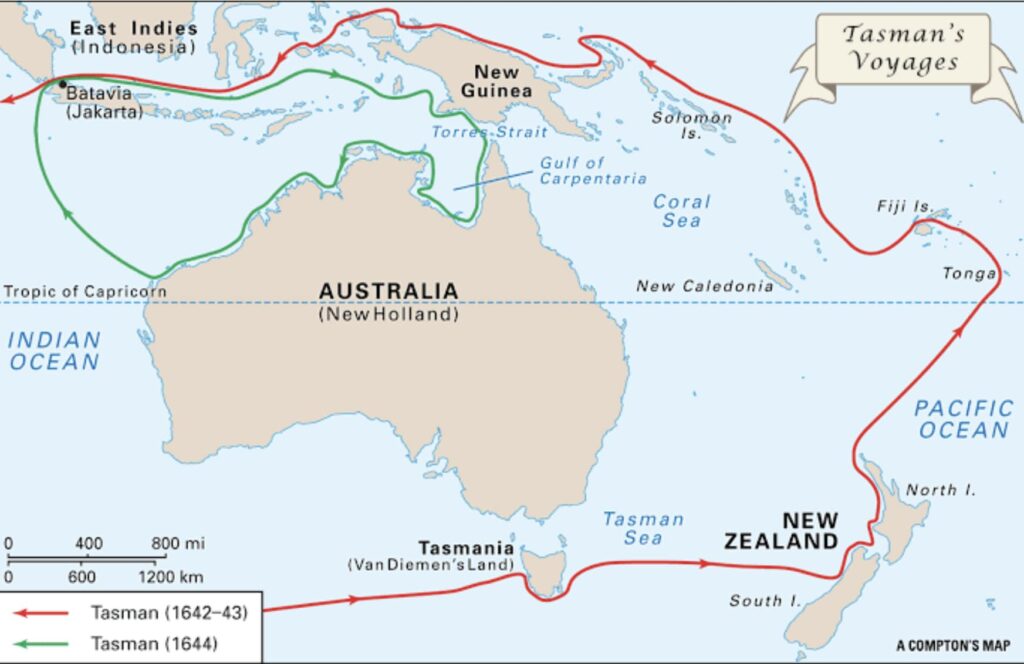
The Tasman expedition left Batavia (Netherlands East Indies, now Jakarta, Indonesia) on 14th August 1642 with two vessels, the Heemskerk with a 60-man crew and the Zeehaan with 50 men on board. They first called at Mauritius, where they stayed for a month-long repair to both ships.
Intending to sail eastward at the southern latitude of 52 or 54 degrees, it became evident early on that weather would not permit this. It was decided to sail along the 44th and 40th parallels and as the two ships reached the longitude of the islands of St Peter and St Francis on the South Australian coast, then travelled further south, sighting Tasmania on 24th November 1642. Tasman named the island after the governor of The Dutch East Indies, Antonio van Diemen. The first two mountains they sighted on the island were named Mount Zeehan and Mount Heemskerk, after their ships. Variable weather made exploration of the eastern coast of Van Diemen’s Land difficult. Seeking shelter in a large bay, Tasman put into a cove to shelter from a storm. He called the location Storm Bay. A later explorer (Furneaux) misread Tasman’s notes and called this bay Adventure Bay and a larger bay nearby was erroneously marked on Furneaux’s charts as Storm Bay.
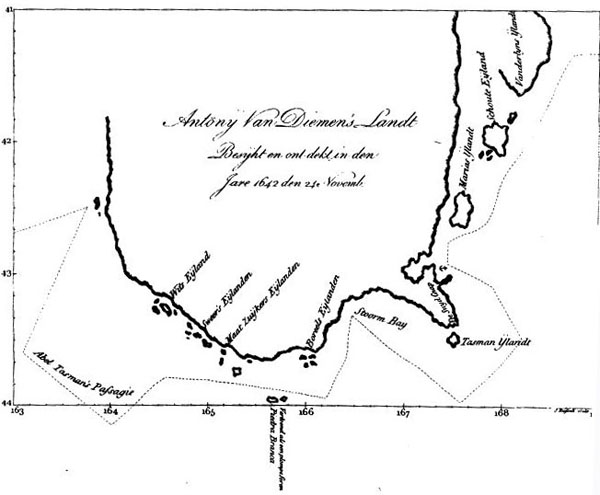
Arrived and discovered in the
year 1642 on 24e November
On 1st December, the storm having abated, the ships were able to move on before coming to anchor at Green Island. They put ashore for supplies at what is now known as Blackman Bay (north of Dunalley). Two days later, the carpenter, Peter Jacobsen, volunteered to swim ashore with a pole on which was the Prince’s flag, which he planted on the shore of the bay. Thus, Tasman took possession of the island for the Dutch. Not finding enough good water, Tasman moved on and continued his search, traversing the east coast of Tasmania. Source: Our Tasmania
Tasman Monument Track, Tasman Bay , Dunalley,
The unveiling of a memorial erected by the Royal Society of Tasmania with the support of citizens, on the spot where Abel Janszoon Tasman planted the Dutch flag in Tasmania in 1642, was performed on Monday. A party of 27 persons visited the site of the monument at Prince of Wales Bay, on the east coast of Forestier Peninsula, and the Memorial was unveiled by the Administrator, Sir Herbert Nicholls. The monument is of solid concrete, 12ft 6in high and 4ft 6in at the base. It stands in a conspicuous place on the edge of the bay close to the high-water mark.
The Sydney Morning Herald, 5th December 1923.
Source: Monument Australia
Of the beaten track.
This is the precise isolated location where Abel Tasman and his crew of sailors and scientists planted the Dutch flag is a remarkable sight. Klaas Laning recently captured rare photos of the memorial at this isolated landing spot, which is largely unknown to tourists. It’s worth noting that this memorial sits on private property, within the Bangor Estate, and access requires permission. Klaas and his companion obtained permission to camp on the estate and embarked on a 5-6 hour hike from the campsite to reach this historic site. Information received with thanks to Keith Paulusse.
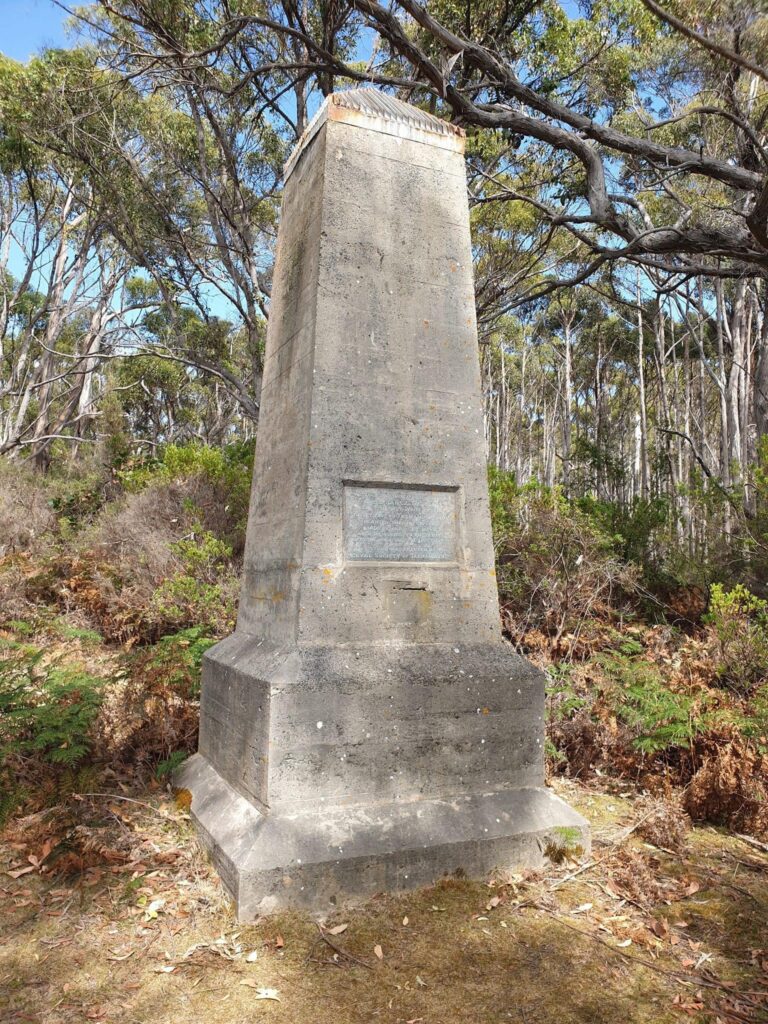
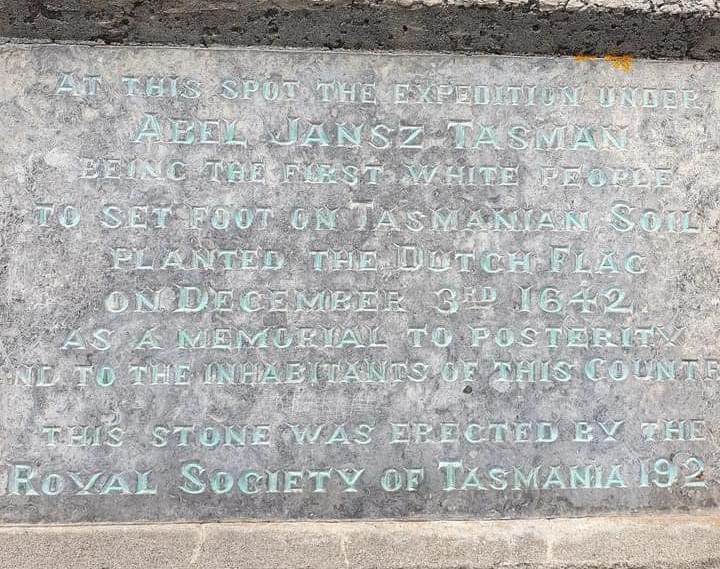
Abel Jansz Tasman
Being the first white people
to set foot on Tasmanian soil
Planted the Dutch Flag
on December 3 , 1642.
As a memorial to posterity
and to the inhabitants of this country
This stone was erected by
the Royal Society of Tasmania 1923.
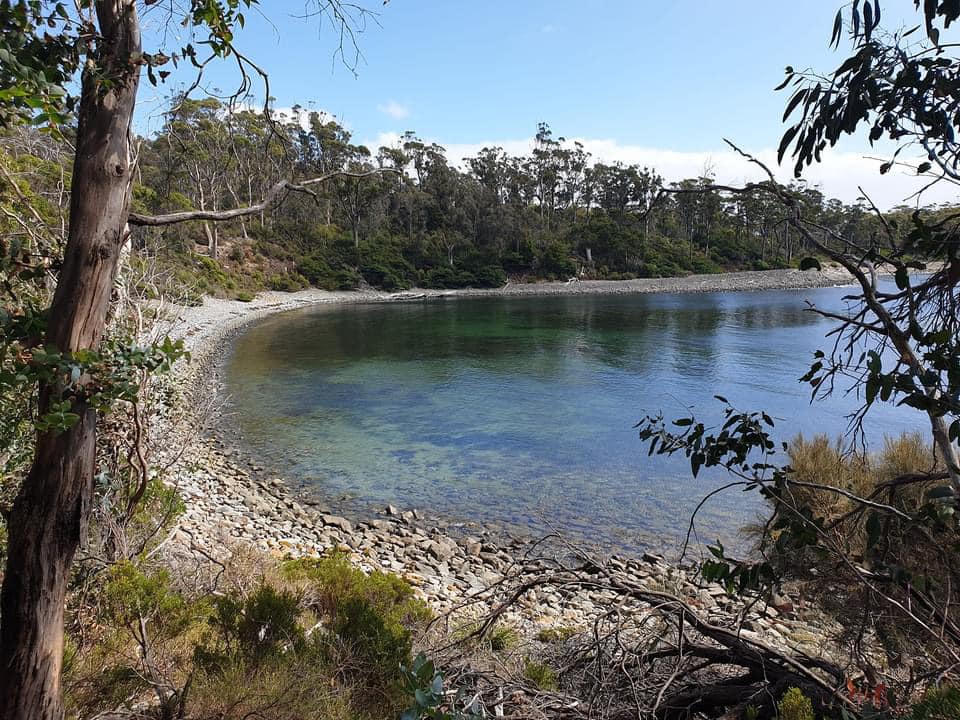
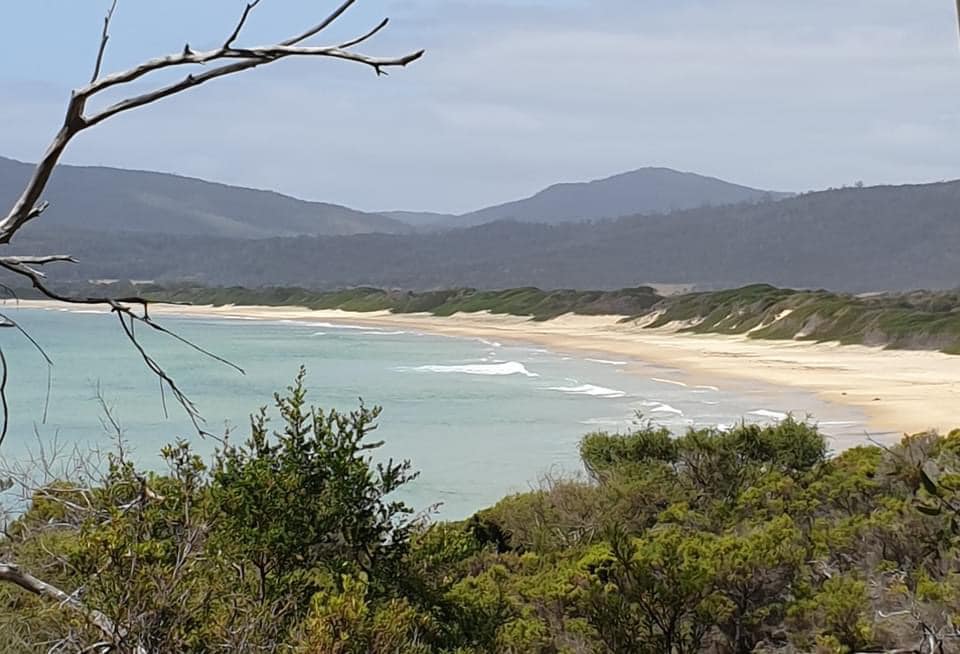

See also: First Dutch contacts in Australia – Tasmania 1642 to 1772
